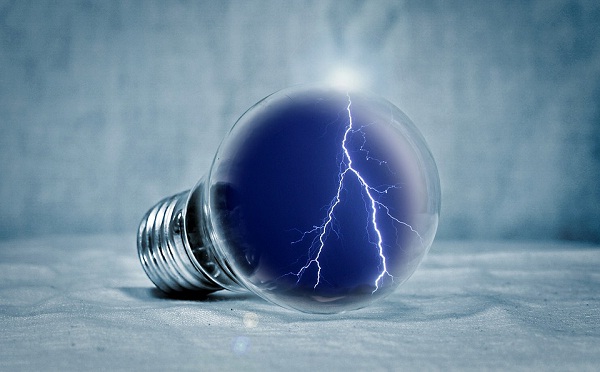Industry competition has intensified why the photovoltaic giants are expanding their production?
After a continuous outbreak, China's photovoltaic industry has stepped into the eve of parity online. Despite the downward pressure on subsidies, the production process related to the industrial chain is improving and the battery efficiency is also improving. At the same time, non-photovoltaic costs are expected to decline with the support of a number of policies, so the downward adjustment of subsidies should not be correct. The industry has had too much impact. Under this circumstance, China's photovoltaic industry will continue to be hot in 2018, and it is expected to maintain about 45GW of installed capacity. Industry accelerates development, market competition is gradually improved From the comprehensive warming in 2015 to the unprecedented wave of rushing in 2016, and the full-scale outbreak of distributed photovoltaics in 2017, the development speed of the photovoltaic industry is faster every year, and the cumulative installed capacity of 120GW is completed three years ahead of the thirteenth. Five" planning goals, and this momentum is expected to continue. In this case, the industry's dependence on subsidies is decreasing. On the other hand, the year-on-year expansion of subsidy arrears is becoming a hidden problem for the entire new energy industry. From the recently announced policies, the country is accelerating the development of new energy industries while accelerating the exit of new energy subsidies. Whether it is the rapid development of the industry or the gradual emergence of subsidy arrears, it indicates that the PV subsidy will accelerate its withdrawal from the historical stage. Although the industry has already prepared for the downward adjustment of subsidies, the decline in revenue is actually real. In the face of falling revenues, what the industry needs is to further reduce costs. On the other hand, due to the extensive expansion, many photovoltaic power plants have various quality problems. To solve these problems, the photovoltaic market must eliminate backward production capacity and develop toward high efficiency. In this case, market competition is gradually escalating. According to the Notice of the National Energy Administration, the Ministry of Industry and Information Technology and the National Certification and Accreditation Administration on Improving the Technical Indicators of Major Photovoltaic Products and Strengthening Supervision, the photoelectric conversion of polycrystalline silicon battery modules and monocrystalline silicon battery modules has been started since January 1, 2018. Efficiency market entry barriers were increased to 16% and 16.8%, respectively. The front runner program has also raised the relevant standards. The photoelectric conversion efficiency of the polycrystalline silicon module and the monocrystalline silicon battery module used in the latest application of the leading base should reach 17% and 17.8% respectively; the polycrystalline silicon battery module used in the technology leading base The photoelectric conversion efficiency of the monocrystalline silicon battery module should be 18% and 18.9%, respectively. The increase of the market entry threshold can prevent the inefficient production capacity from entering the market to a certain extent, improve the overall quality of the photovoltaic power station, and effectively strengthen the profitability of the photovoltaic power station. At the same time, the leader in the industry as a benchmark for the improvement of the standard of the components used has also led the industry to become more efficient. At the same time, the National Development and Reform Commission and the Energy Bureau issued the "Guiding Opinions on Improving the Scale Management of Photovoltaic Power Generation and Implementing the Competition Mode Configuration Project" last year. The opinion pointed out that the PV projects for unidentified investment entities should be publicly selected through competitive means such as bidding. The main body of investment. For projects that have already carried out preliminary work and have identified investment entities, the annual construction scale indicators are arranged through competitive comparison and selection and optimization. Under the call of this policy, in 2017, a number of provinces and municipalities introduced a competitive allocation method for the construction of ordinary photovoltaic power plants, and publicly allocated the scale of new photovoltaic power generation construction. In the future, PV projects will all adopt the methods of public bidding and competitive selection to confirm the investment subject, while the competitive allocation is the competitiveness of the enterprise, lower on-grid tariff, lower cost and higher quality. It is the foundation of a photovoltaic project, which may be a good thing for those companies with strong competitiveness, but for those companies with weak competitiveness and high costs, it is tantamount to a blue sky. Undoubtedly, the competition configuration is promoting the cost of photovoltaic power generation and the decline of on-grid electricity prices. At the same time, it is pushing the PV companies to “reducing costs and increasing efficiency†and intensifying competition in the industry. Photovoltaic giants frantically expand production of small and medium-sized enterprises under pressure Although the development prospects of the photovoltaic industry are improving, the market competition is constantly upgrading, and the photovoltaic enterprises are “compressed.†Under this circumstance, the major PV giants began to expand their production. According to public information, GCL-Poly announced a 60,000-ton expansion plan this year, which is expected to have a capacity of 115,000 tons of polysilicon by 2020. The expansion plan is implemented in three phases. It is expected that the first phase of 20,000 tons of polysilicon production capacity will be completed before the second quarter of 2018, and the second phase of 20,000 tons will be completed by the end of 2018. Longji's monocrystalline silicon wafer production capacity is expected to reach 15GW by the end of 2017 and 25GW by the end of 2018. The production capacity of Zhonghuan's monocrystalline silicon wafers is expected to reach 12GW by the end of 2017, and the single crystal production capacity will reach 23GW by the end of 2018. Tongwei Solar officially launched the 10GW high-efficiency crystalline silicon battery project at the Chengdu base on November 18th, 2017. In 2018, the production capacity in the battery segment will exceed 10GW. In the next 3-5 years, the battery capacity will exceed 30GW. In the crystalline silicon segment, At present, Tongwei's production capacity is 20,000 tons. By 2018, Tongwei's polysilicon production capacity will reach 70,000-80,000 tons. It is estimated that by 2020, the production capacity of Tongwei's two base polysilicon in Leshan and Baotou is expected to reach 100,000 tons each. . According to statistics, there are more than a dozen companies with expansion plans in the single crystal chain. The total production capacity will reach 38GW in 2017, more than doubled in 2016. In 2018, the national single crystal production capacity is expected to reach 60GW. . In addition, companies such as Jinko Energy and Artus also have expansion plans. At a time when market competition is becoming more and more fierce, it is surprising that the major PV giants are inextricably expanding, but there are traces under consideration. At present, due to the small space cost reduction of inverters, brackets, cables, etc., the cost reduction in the next few years will still be on the component side. Therefore, the cost of the photovoltaic industry should be further reduced, and the price of components must be reduced. The reduction in component prices requires technological innovation and upgrades. In this regard, the improvement of the diamond wire cutting process and the promotion of black silicon texturing and passivation technology provide a way out for component cost reduction. However, the problem is that there are not many companies that have advanced technology in diamond cutting and mastering advanced technologies such as black silicon, cashmere, and passivation. Therefore, manufacturers that do not have these advanced technologies will not be able to reduce costs and lose competitiveness. Therefore, under the overall requirements of the decline in component prices, photovoltaic giants with advanced technology and small and medium-sized enterprises with no technology will face a market situation of two days. Under the mad expansion, PV giants will continue to expand their advantage and seize market share. Under this circumstance, the profits of polysilicon, battery chips, components and other links will be concentrated to enterprises with technological advantages and timely expansion, while enterprises without technological advantages will lose their living space and gradually be eliminated by the market. Benign competition is the guarantee for the sustainable development of the industry Orderly competition is an indispensable part of the industry's progress. Only in the case of intensified market competition, only the products with the best quality and highest efficiency can seize the market; only enterprises with product clearance and service clearance can become the investment subjects of PV projects; Only by reducing costs in a timely manner, companies that strengthen technological innovation can grow with PV. From this perspective, the incentive market competition is guiding the photovoltaic industry to mature. But disorderly competition can hurt the industry. For example, some speculators are concerned about loopholes in industry supervision and other aspects, deceiving ordinary people who do not understand the facts, and selling photovoltaic systems assembled from inferior products to rural users, while defrauding subsidies and letting the people lose their blood. There are also some unscrupulous businesses, holding products of poor quality, deliberately lowering prices, and using the psychology of users to sell inferior products. Even some companies do not consider the cost and other factors, and simply lower the price, forming a malicious low-price competition. Therefore, in strengthening the market competition, the photovoltaic industry also needs to prevent vicious competition and create a benign development environment for the industry. The government should strengthen supervision to prevent disorderly and chaotic competition in the market. For example, in the third batch of PV front-runners' preferences, it has been stipulated that in order to prevent the malicious low-price competition of enterprises as much as possible, the new leader base clearly declares that the lowest electricity price is 5 cents lower than the second lowest electricity price in the bidding process. Direct judgment must not be selected. Disperse Dyes,Polyester Dyeing,Disperse Yellow E-3G,Disperse Dyes For Polyester ZHEJIANG E-DYE SUPPLY CHAIN MANAGEMENT CO.,LTD. , https://www.easytodyes.com
